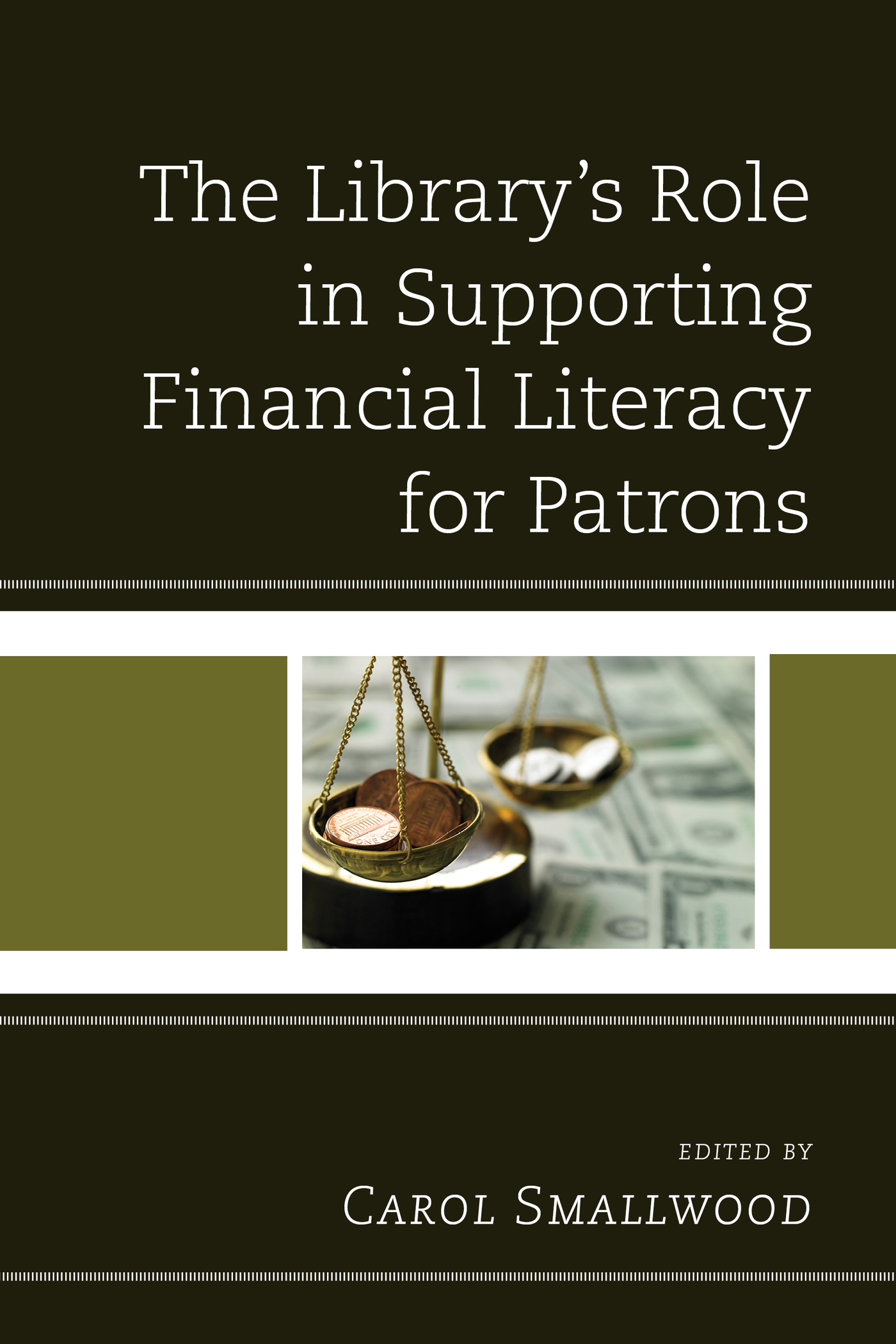The Librarys Role in Supporting
Financial Literacy for Patrons
The Librarys Role in Supporting
Financial Literacy for Patrons
Edited by Carol Smallwood
ROWMAN & LITTLEFIELD
Lanham Boulder New York London
Published by Rowman & Littlefield
A wholly owned subsidiary of The Rowman & Littlefield Publishing Group, Inc.
4501 Forbes Boulevard, Suite 200, Lanham, Maryland 20706
www.rowman.com
Unit A, Whitacre Mews, 26-34 Stannary Street, London SE11 4AB
Copyright 2016 by Rowman & Littlefield
All rights reserved. No part of this book may be reproduced in any form or by any electronic or mechanical means, including information storage and retrieval systems, without written permission from the publisher, except by a reviewer who may quote passages in a review.
British Library Cataloguing in Publication Information Available
Library of Congress Cataloging-in-Publication Data Available
ISBN 978-1-4422-6591-2 (cloth : alk. paper)
ISBN 978-1-4422-6592-9 (paper : alk. paper)
ISBN 978-1-4422-6593-6 (ebook)
 TM The paper used in this publication meets the minimum requirements of American National Standard for Information Sciences Permanence of Paper for Printed Library Materials, ANSI/NISO Z39.48-1992.
TM The paper used in this publication meets the minimum requirements of American National Standard for Information Sciences Permanence of Paper for Printed Library Materials, ANSI/NISO Z39.48-1992.
Printed in the United States of America
Foreword
Financial literacy is a broad, encompassing concept that includesat a basic levelthe critical, global need for mastering financial literacy competencies across all ages, all socioeconomic levels, and all disciplines. Included with this broader concept are a wide variety of terms or program branding phrases such as financial wellness, smart investing, practical money skills, and money management, to name just a few used to attract and convince people to look closely at their choices for earning, spending, saving, and investing dollars. These broad areas also include identifying opportunities as well as challenges that span from the basics of interest rates to recognizing and avoiding financial scams.
Delivering this content worldwide is not new and includes everything from childrens television skits with beloved characters making both silly and wise financial choices to integrated curriculums with lessons and assignments in courses in all levels of education, individual courses in P16 education, programs of study in higher education, as well as lifelong learning initiatives outside the structured educational arena but embedded in service association initiatives, social programs, and the banking industry itself. And although some may think that the myriad advertisers designing content to take peoples money are unchallenged in delivering messages to consumers, there may be just as many entities delivering messages for how to spend, how to spend wisely, andmore importantly for manywhy and how to save money.
So why is it important for all types of libraries to take a role in this critical initiative?
Public librarians play a critical role in the education of the community and play a major role in gathering, highlighting, and designing their own programs or delivering others programs on how financial literacy contributes to overall literacy levels of constituents and the communitys sound financial structure. Obviously, public librarians benefit immensely from partnerships and collaborations with any entities, but they absolutely benefit in both altruistic and self-serving ways from partnerships with the communitys financial entities.
School librarians seek to support teachers, curriculum, and instruction but also to play a major role in inculcating students with information literacy as well as critical thinking across disciplines, which includes critical initiatives for understanding not only all areas of mathematical study but the application of mathematical studysuch as calculus and algebrato financial literacy. School librarians also play a major role in delivering messages throughout their programs on sound financial practices, which can include having story times on allowance and buying toys or purchasing and marketing materials on saving for a car or college.
Whether special libraries are supporting businesses such as lay firms, general businesses, banks, or specialized academic or public environments, the use of special implies a process of managing and delivering in-depth content on financial literacy as well as content on the application of information for personal needs or client information and needs.
Academic librariesalthough broadly committed to and focused on the broadest definition of information literacy (IL)include broad and multiple levels of literacy instruction, such as financial literacy through IL examples and exercises centering on financial issues and content as well as through partnerships with classroom faculty teaching financial literacy curriculum, designing pathways to financial literacy web content, and ongoing collection management issues on financial matters.
So why this book? It provides current content, a breadth of information, and not only a breadth of ideas butwhen possiblespecific ideas for making these important programs work. What do I like the most?
Content with extensive area and departmental and discipline-specific financial literacy instruction and outreach ideas, instructional design suggestions, and inclusion and assessment of specific curriculum available in higher education today, along with good bibliographies that include a variety of higher education library programs and services
Content with the uncomfortable but necessary focus on educating to create awareness of financial scams as well as avoiding and recovering from scams
Content with extensive ideas on sharing information to assist specific and in many cases vulnerable target audiences such as children, teens, single parents, and seniors
Content with advice for educating library employees on critical financial management issues
Content with extensive resources for not only adding to collections but assisting in program planning
Specific case method content to add in design and delivery of exemplary programs
And if you dont read anything else or do read but dont have time to implement or integrate the ideas, dont miss chapter 20, Quick Tip Guides for the Reference Desk, by Jennifer Wright Joe. This unique look at our roles and responsibilities (as well as tips!) for delivering financial information should be required reading for every practicing reference librarian and library staff member in all types and sizes of libraries as well as for all those in library education in general as well as specific reference classes.
Finally, while there are many critics of the need for or success of financial literacy programs, one need only review a financial wellness quiz to realize the importance of the movement. And if you want to be personally humbled, take a financial wellness quiz. Note, I am not talking about mathematics knowledge quizzes or financial management quizzes, but rather a financial wellness or literacy quiz. Typically, its fewer than ten questions designed to ascertain your knowledge about financial matters, matters we should be knowledgeable about, and your score (Im not sharing mine) might amaze you.
Julie Todaro, PhD
Dean of Library Services, Austin Community College
20162017 President-Elect, American Library Association
Next page
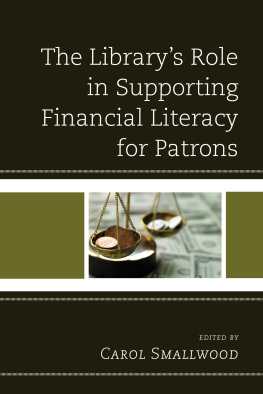

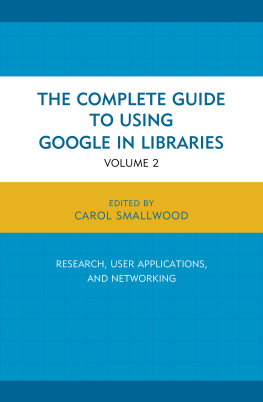
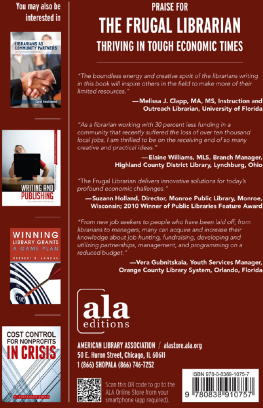
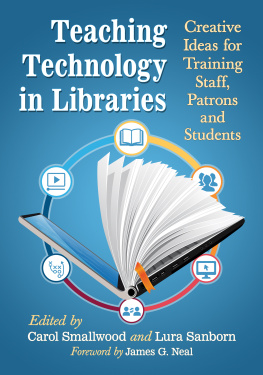



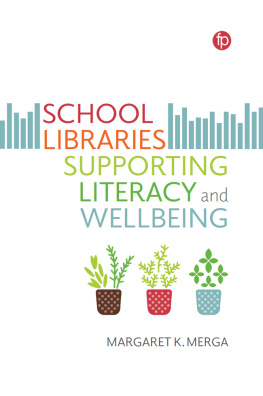
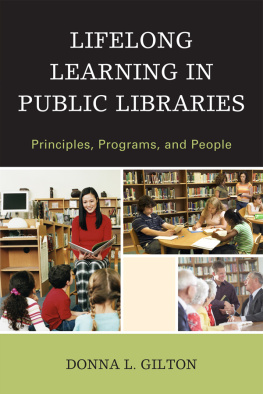
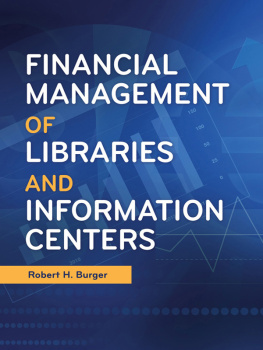
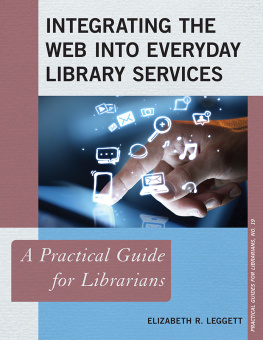

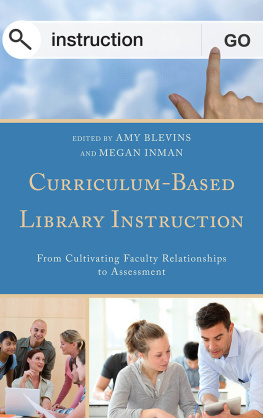
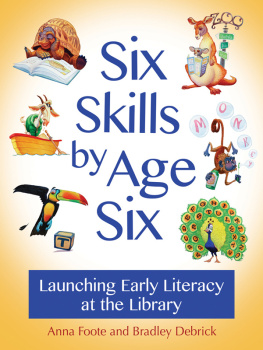
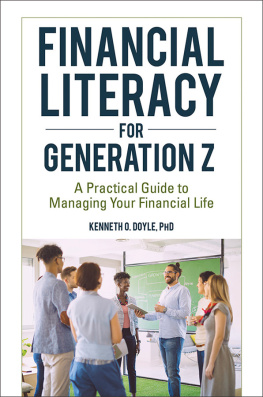
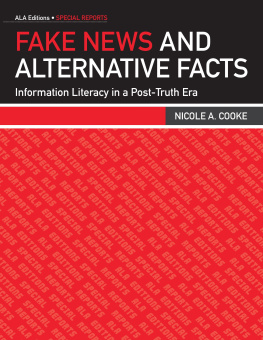
 TM The paper used in this publication meets the minimum requirements of American National Standard for Information Sciences Permanence of Paper for Printed Library Materials, ANSI/NISO Z39.48-1992.
TM The paper used in this publication meets the minimum requirements of American National Standard for Information Sciences Permanence of Paper for Printed Library Materials, ANSI/NISO Z39.48-1992.